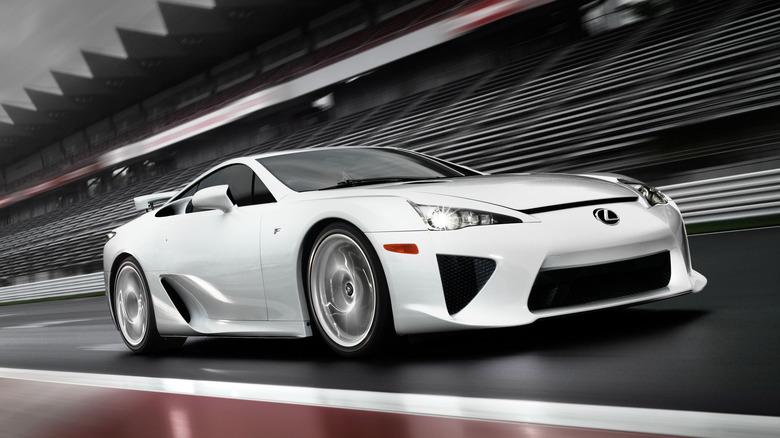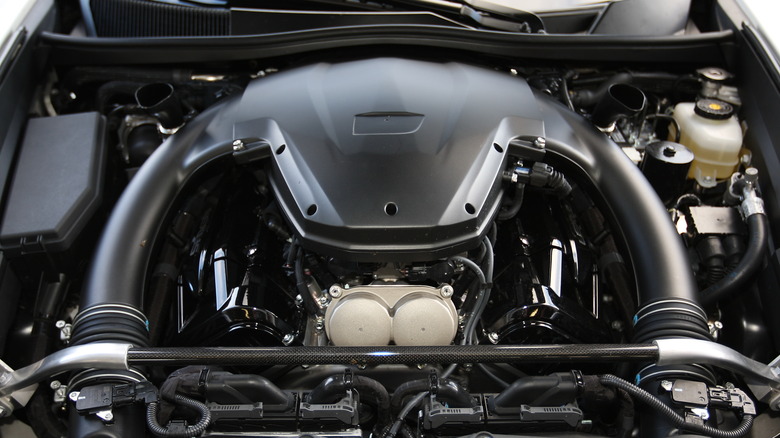Here's What Made The Lexus LFA V10 Engine So Special
Even speaking the name of the Lexus LFA elicits thoughts about its powerplant — a borderline mythical V10. V10s have been used for decades in sports cars like the Dodge Viper, and a healthy smattering of Lamborghinis, but the LFA's V10 is something else entirely.
First, the engine is comparatively tiny. The Dodge Viper's V10 had a displacement of well over eight liters over the car's lifespan, while the V10 in the Lamborghini Huracán is a smaller 5.2-liter engine. The LFA, on the other hand, was much more compact at a displacement of just 4.8 liters.
Specs-wise, the engine redlines at 9,000 RPM, closer to the redline of a motorcycle than a sportscar. The LFA puts out 553 horsepower at the crank and 354 pound-feet of torque. For top speed, the V10 allows the LFA to launch itself from 0-60 miles per hour in 3.6 seconds. That's fast today, though unheard of when the LFA debuted well over a decade ago. If that wasn't impressive enough, it pushes to 202 miles per hour for top speed.
Every detail engineered to perfection
The engine in the aforementioned Lamborghini has its banks angled at 90 degrees. The Lexus' banks are angled at 72 degrees. While 18 degrees may not seem like much of a difference, according to LFA chief engineer Haruhiko Tanahashi, it was precisely angled to be as well balanced and smooth as possible. A loud, roaring engine is half the point of a supercar like the LFA, but it doesn't have to rattle your teeth when idling.
In a step that may seem counterintuitive, the LFA's engine does not benefit from a turbocharger/supercharger. It's naturally aspirated to eliminate lag or delay when mashing the accelerator. Forced induction may deliver more power, but Lexus engineers believed it wasn't worth it at the cost of anything other than the smoothest possible acceleration.
Everything down to the fuel injectors and length of the exhaust system were engineered to be as optimal as possible. The fuel injectors, Toyota's variable valve timing system, and the exhaust manifold work together to ensure that the engine puts out as much torque as possible, no matter where the revs are.
The engine, according to Lexus, was obsessively engineered by Haruhiko Tanahashi and his team at Lexus to make sure the engine performed as well as possible. Given the reputation the LFA has developed over the years, it's safe to say that Tanahashi and his team were successful, as the engine does its best straddling the line between work of art and powerplant.

